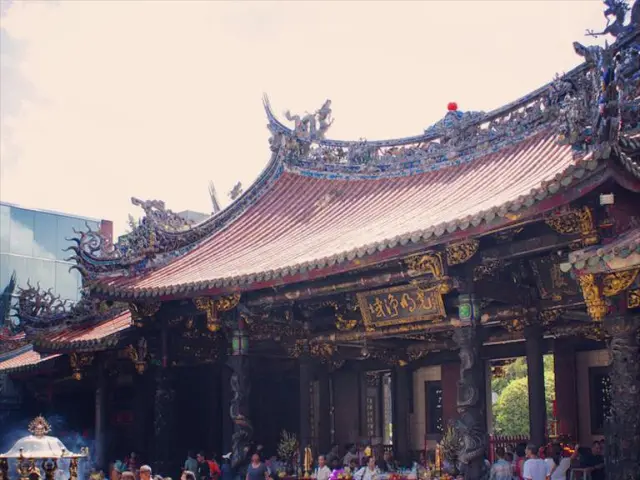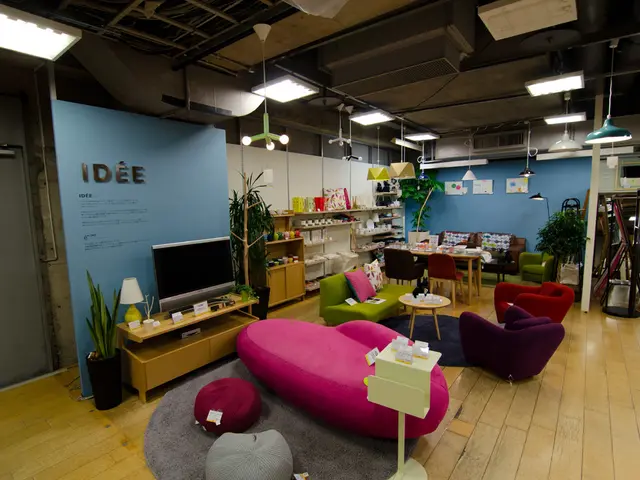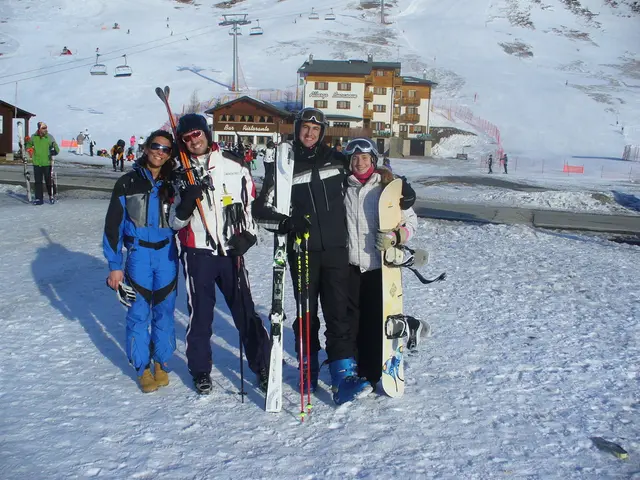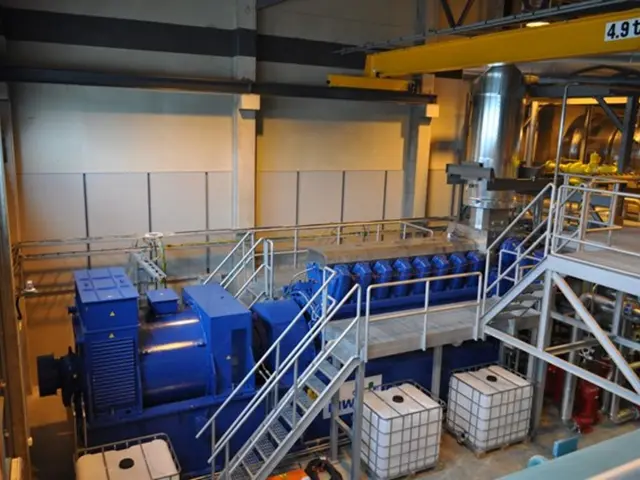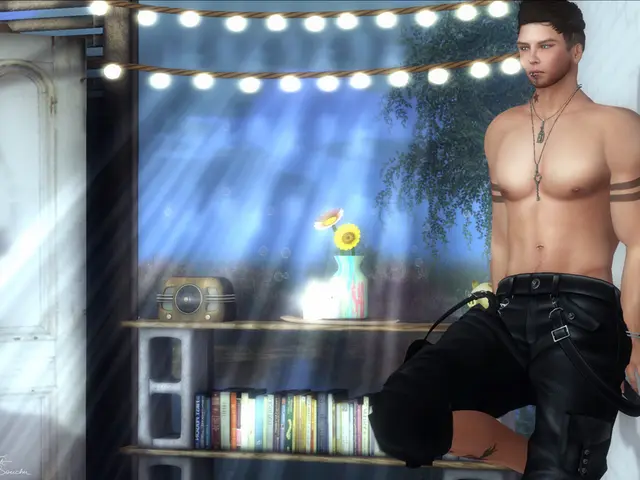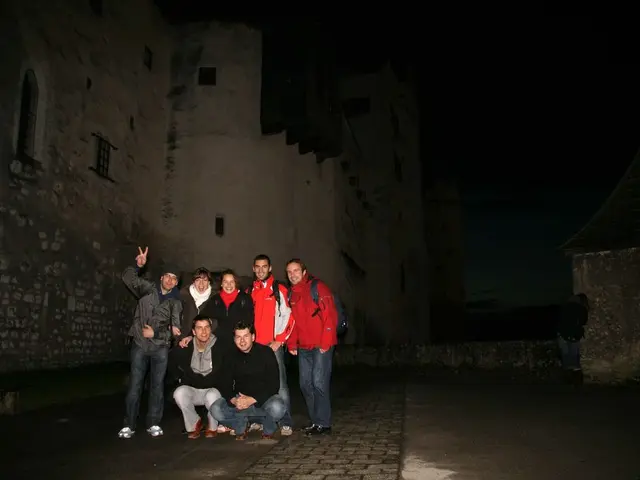Allies from unusual corners: The bonding of Japan and Southern Estonia in the 2024 European Capital of Culture, Tartu
Progressive Connections: Japan and Estonia's Unlikely Ties
- Social Media: Share294
In an intriguing twist of fate, Japan and Estonia have discovered an unexpected camaraderie, despite being separated by almost 8,000 kilometers and seven time zones. These two diverse nations have emerged as a source of inspiration for artists, curators, and cultural leaders within their respective communities, with their unique cultures and innovative spirit shining through in their work. The European Capital of Culture Tartu 2024 program is set to be a thrilling year-long celebration of creativity, showcasing a multitude of projects born from collaborations between Estonian and Japanese artists.
This article is published in collaboration with the European Capital of Culture Tartu 2024 program.
How did this relationship develop? On one side, this mutual interest and cooperation stem from Japanese cultural policies that aim to promote and share its culture globally. To achieve these goals, organizations like the EU-Japan Fest have been established, supporting cultural exchange between the European Union and Japan since the 90s. They provide funding to various European Cities of Culture and impactful cultural collaborations between Europe and Japan.
"It's clear that the effects of these enacted policies can be seen. Japanese artists are highly visible on the global stage, and their cultural networks are robust," Kati Torp, artistic director of Tartu 2024, stated, pointing out that various EU-Japan Fest grants fund projects and initiatives within the Tartu 2024 program.
Still, the ties to Japan in the program developed organically based on artistic decisions. "If you look at our program, you will see the results of long-term labor. All of the major Japanese artists or projects have an existing connection to Estonia," Torp expounded.
One of the highlights of the European Capital of Culture year in Southern Estonia is undeniably Ryoji Ikeda's solo exhibition at the Estonian National Museum. The highly anticipated audiovisual experience, opening in November, is not the first time the renowned artist has presented his work in the country.
"I personally coordinated Ikeda's 'Supersymmetry' exhibition at the Kumu Art Museum in 2015-2016. As a result, I have a relationship with the artist. This connection gives both parties confidence to collaborate again if there has been successful cooperation between them previously," Torp emphasized, underscoring the importance of building trust and maintaining a solid reputation in creative circles.
Ikeda's work explores science, making it a natural choice for the Tartu 2024 team to collaborate again in the university town of Tartu. Moreover, one of Ikeda's close friends, Tsuyoshi Tane, was one of the architects of the new Estonian National Museum building. Tane is also involved with the project, working with Ikeda to ensure his works fit seamlessly within the space.
Ikeda will create two new works specifically for Tartu 2024: an installation based on his collaboration with the Estonian Biobank – one of the two branches of the University of Tartu Institute of Genomics; and a sound installation created in collaboration with the Estonian Philharmonic Chamber Choir. Additionally, one artwork that already exists, the audiovisual installation "data-verse," will be exhibited.
"Art functions as a universal language, communicating hard-to-express ideas. Ikeda works with data from the Institute of Genomics' biobank, which has collected DNA from Estonian people, and displays it with large-scale room installations," Kati Torp explained.
A new music piece composed by Ikeda will also be performed by the Estonian Philharmonic Chamber Choir. Ikeda is not a classically trained composer but an electronic musician who usually works independently. This will be his first collaboration with a professional choir and conductor Tonu Kaljuste.
Estonian music holds international acclaim. As a testament to the groundwork laid by Estonian musicians, composers, and conductors like Arvo Part or Tonu Kaljuste, Ikeda specifically requested to work with the Philharmonic Choir.
Aigu Om - The Art of Idling
Võru County in Southern Estonia is home to a unique festival celebrating the art of idling or "molutamine" in Estonian. Aigu Om (meaning "there is time" or "take your time" in Võro language) is bigger than ever during the European Capital of Culture year, with activities taking place in three parishes over a period of a week. This year, the focus is on Japan and Japanese culture.
Aigu Om is not a traditional festival with big stages and crowds. It is a community music-word-forest event taking place in natural environments and community spaces scattered among small villages where everyone can participate. For the organizers, cooperation is essential.
"Aigu Om" means - there is time, take your time! This idea has become the motto of the Võru region and is the festival's central message. Over the course of a week, from 15-21 July, you will be able to experience smoke saunas, herbal healing workshops, and Japanese cooking classes. The Japanese-Estonian collaboration musical piece "Mõts/Mori/Forest" will have its world premiere in the cozy Aigu Om barn-concert hall in my hometown of Viitina," the event's organizer, Estonian folk singer-songwriter Mari Kalkun, said.
The event aims to identify points of intersection between the two cultures. For example, forest practitioners from both countries, including writer Valdur Mikita, Japanologist Alari Allik, performance artist Daizaburo Sakamoto, and dendrologist Yutaka Miura, will gather in Pähni forest in Rõuge parish. Visitors will have the opportunity to experience the most significant cultural expressions of both countries, from forest meditation practices to smoke saunas, and witness collaborative works by representatives from both cultural spheres.
The organizer, Mari Kalkun, has visited Japan seven times, which laid the foundation for this year's festival. "The visits have always been incredibly inspiring, and our Japanese guests are amazed by the nature and saunas at Võrumaa. Thus, our starting point was mutual inspiration."
"The connections I've formed in Japan are lifelong. Just like a Japanese fan wouldn't abandon you if you made a friend in Japan, they'll be your friend for life. Meeting in person is essential for developing such bonds. We hope to establish such meetings through the Aigu Om festival," Kalkun concluded.
In addition to the new Japanese additions, the traditional community-based program, where locals open their homes to visitors, remains. Aigu Om workshops, contemplations, concerts, and hikes offer an opportunity to immerse in the rich local cultural heritage, the knowledge and stories of the local people, and the captivating nature of Võrumaa.
"We have a diverse community with cool people here, so we have a lot to offer. You can spend an entire week relaxing in Vórumaa this summer. We invite visitors to immerse themselves in the rich local culture, and our guests, Japanese performers, bring their unique perspectives to the cultural and natural settings," Kalkun concluded.
Seeing Yourself in Others
From all of this, it seems there is a mutual interest and understanding between Japan and Estonia. There has been much talk about the joint appreciation for nature and technology. But what do artists and cultural leaders seek in distant lands remains a question.
"First and foremost, it's important to understand that Japan is the world's fourth largest economy. With a population of 125 million, there's a niche for many phenomena," Mari Kalkun posited. "Estonia is certainly unknown in Japan – except for Sumo wrestler Baruto. However, Finns have already paved the way with Moomins and Marimekko. If we take a cultural approach, I believe we will find our niche. I've already found my way to Japan through my music," she added.
"I have given much thought to why Japan fascinates Estonians so much. It just does. I am also intrigued by Japanese culture, from fashion to visual arts that speak to many people in Europe," said Torp. She added that the reason why Estonian artists look towards Japan may be psychological: a search for oneself in the other or an attempt to test out their limits in new situations. While Japan is distant and different, it is accessible to the West and the quiet and introverted attitudes are also comfortable for Estonians.
Kalkun agrees that while there are deep differences, there is something hauntingly similar between the lands: "When I visit Japan, I always feel as if I am on another planet. Yet, I've always believed that our fundamental nature is similar – whether it's a belief in nature's spirituality or unusual pairings of technology and tradition. That primitiveness and modernism are merged."
It's evident that Tartu and Southern Estonia benefit from positive relations with Japanese artists and organizations. However, this cannot be a one-way street. There must be something compelling about Estonia that organizations want to invest in and artists wish to collaborate.
For Kati Torp, Estonia offers an accessible yet unique space. "We are accessible and safe, yet very different. We have topics like nature, folklore, heritage that we both value. We offer an alternative perspective on these topics," she concluded.
Mari Kalkun agrees that Southern Estonia, specifically Võru County, has much to offer foreign guests. "We can offer our nature, silence, and the art of resting your mind and body," Kalkun said. The musician also highlighted the excellent level of Estonian music and added that the creative potential is limitless.
European Capital of Culture Tartu 2024 surprises with over 1,000 events throughout the year. All those interested in experiencing Japanese culture are invited to:
- Japanese forest bathing experience: 18 May, 29 June, 27 July, 17 August in Nõo parish
- Shiro Takatani/Dumb Type theatre play "Tangent", 4-5 June in Tartu
- **Aigu Om (Time Enough!), 15-21 July, in Rõuge, Võru, and Antsla parishes
- A Celebration of the Heavenly grounds, 16-25 August, in Põlva parish
- Refresh. Estonian, Lithuanian, and Japanese textile art. 19 August – 20 September in Tartu
- Performative installation "Peal kiri peal", 12, 14 September in Viljandi
- Ryoji Ikeda's solo exhibition, 2 November – 2 March in Tartu
Read also: The art of survival - Tartu's long road towards the European Capital of Culture**
- Share294
- Tweet
- The European Capital of Culture Tartu 2024 program showcases a multiplicity of projects born from collaborations between Estonian and Japanese artists, a year-long celebration of creativity.
- The ties between Japan and Estonia in the Tartu 2024 program developed organically, stemming from artists' previous connections to Estonia.
- Ryoji Ikeda's solo exhibition at the Estonian National Museum is a highlight of the European Capital of Culture year in Southern Estonia, featuring audiovisual experiences and collaborations with the Estonian Biobank and the Estonian Philharmonic Chamber Choir.
- Ikeda's collaboration with the Estonian Philharmonic Chamber Choir will result in a new music piece composed by Ikeda and performed by the choir, their first collaboration with a professional choir and conductor.
- Estonia's unique festival, Aigu Om, celebrating the art of idling or "molutamine" in Estonian, is growing during the European Capital of Culture year, with activities centered on Japanese culture and the world premiere of the musical piece "Mõts/Mori/Forest."
- Mari Kalkun, the event's organizer, has formed lifelong connections in Japan through her multiple visits and believes Estonia will find its niche by taking a cultural approach when introducing itself to Japan.
- Kati Torp, artistic director of Tartu 2024, believes there is a joint appreciation for nature and technology between Japan and Estonia, but wonders about what artists and cultural leaders seek in distant lands.
- Japanese culture fascinates Estonians, with Torp expressing a personal interest in Japanese fashion, visual arts, and the unique blend of primitiveness and modernism.
- Southern Estonia, particularly Vōru County, has much to offer foreign guests, such as its nature, silence, and the art of resting the mind and body, according to Mari Kalkun.
- The European Capital of Culture Tartu 2024 offers various experiences for those interested in Japanese culture, including Japanese forest bathing, theater plays, festivals, textile art exhibitions, and Ryoji Ikeda's solo exhibition.
- Estonia, with its unique space, accessible yet different perspectives, and valuing nature, folklore, and heritage, offers something compelling to Japanese artists and organizations, benefiting from positive relations with them.


